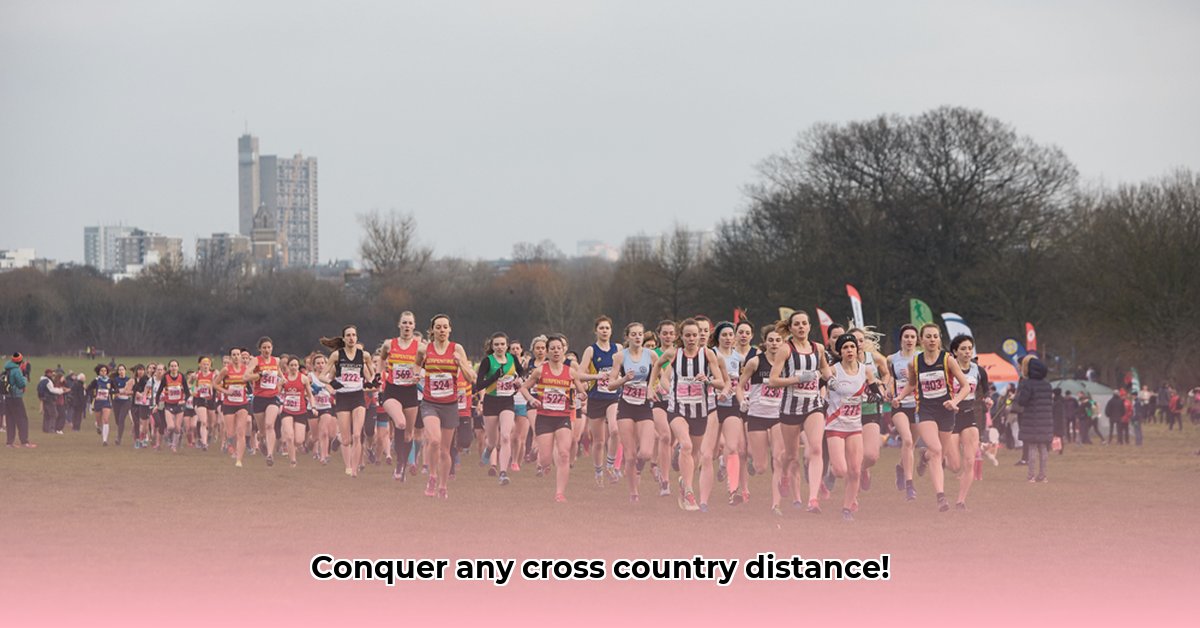
Cross country running offers a diverse range of distances, catering to various age groups and competition levels. This guide provides a clear understanding of typical distances, helping runners of all levels prepare effectively. We'll cover everything from youth races to competitive collegiate and open events. For more detailed information on race lengths, check out this helpful resource: race distances.
Understanding Cross Country Race Distances: A Quick Overview
The length of a cross country race isn't standardized; it depends heavily on the runner's age group and the type of competition. A 5k might be a challenging race for a middle schooler, but a warm-up for a seasoned collegiate runner. Let's break down the common distances:
Typical Cross Country Race Distances by Age Group
The following table provides a general guideline for typical cross country race distances. Remember to always check the specific race details for confirmation:
| Age Group/Level | Typical Distance | Approximate Miles | Notes |
|---|---|---|---|
| Middle School | 2 kilometers (2k) | 1.24 miles | A great starting point for young runners. |
| High School | 3 miles or 5 kilometers (5k) | 3.1 miles | Variations may exist depending on the league and specific race. |
| Collegiate Women | 6 kilometers (6k) | 3.73 miles | A standard distance at the collegiate level. |
| Collegiate Men | 8 kilometers (8k) | 4.97 miles | Slightly longer than the women's collegiate race. |
| Adult/Open Races | Varies greatly | 3.1 miles to 10+ miles | Distances can range significantly, from short 5k runs to ultra-distances. |
Important Note: Always verify the specific race distance with the official race information. This table serves as a helpful general guide but shouldn't be considered definitive.
Cross Country Scoring: Team Dynamics and Individual Contributions
Cross country racing isn't solely about individual performance; team success is equally important. Most races utilize a scoring system where the top five finishers from each team have their places added together. The team with the lowest total score emerges victorious. This highlights the importance of teamwork and collective effort. How does this team-based scoring impact your race strategy?
Navigating Different Levels of Competition
Cross country offers a ladder of competition, starting with local events and ascending to regional, state, and national championships. Each level brings unique challenges and experiences, from the intimate atmosphere of a small local race to the intense pressure of a national competition. How does the level of competition influence your race preparation?
Why the Distance Difference Between Men's and Women's Races?
The disparity in distances for men's and women's races, particularly at the collegiate level, isn't about gender inequality. Scientific research shows average physiological differences in terms of endurance capacity. This difference in race distances is reflective of these established research findings and remains a common standard within the sport.
Developing a Winning Race Day Strategy: A Step-by-Step Guide
Success in cross country requires a well-defined race day strategy. Follow these steps for optimal performance:
- Confirm the Distance: Double-check the official race information to avoid surprises. This critical first step lays the foundation for your training plan.
- Scout the Course (if possible): Familiarize yourself with the terrain—hills, flat stretches—to adjust your pacing strategy. Knowing what to expect helps you strategize effectively.
- Craft a Smart Pacing Plan: A balanced approach prevents burnout. Do not start too fast. Avoid exhaustion.
- Fuel Your Body: Maintain proper hydration and nutrition in the days and hours leading up to the race. Proper fueling is essential, especially in longer races.
- Game Day Execution: Execute your plan confidently, and remember to enjoy the race! Training and preparation build confidence and enjoyment.
This comprehensive guide provides a solid foundation for understanding cross country race distances. By combining a strong understanding of distances with thoughtful preparation, every runner can maximize their potential.
Optimizing Cross Country Distances for Young Runners
Determining the optimal cross country distance for young runners is crucial for their safety and enjoyment. It's not simply about age but also considers individual abilities and experience. What are the key factors to remember when selecting a distance suitable for a young runner?
Age-Appropriate Distances: A Guiding Framework
While no universally accepted standard exists, general guidelines based on age can be used:
- Elementary School (5-11 years): 1 to 2 kilometers (0.6 to 1.2 miles). Emphasis on fun and foundational fitness.
- Middle School (11-14 years): 2 to 3 kilometers (1.2 to 1.8 miles). Developing endurance and competitive spirit.
- High School (14-18 years): 3 to 5 kilometers (1.8 to 3.1 miles) or longer, depending on experience. Building strength and endurance.
These guidelines are merely starting points; individual variations exist. Remember that a balance between challenge and safety is crucial.
Individual Factors Matter: Experience, Training, and Health
A child's prior running experience, training intensity, and any existing health conditions all significantly impact their optimal race distance. Just as fitting shoes correctly is vital, so too is choosing the right race distance.
Resources and Information: A Comprehensive Approach
The absence of consistent distance standards across different races necessitates careful planning. Consult race information meticulously, and ensure age-appropriate categories are available. Check local running organizations or governing bodies for guidelines; many provide age-based recommendations.
Prioritizing safety is paramount. Ensure that your young runner is adequately prepared through training, nutrition, and hydration. This cautious approach will help maximize their experience.